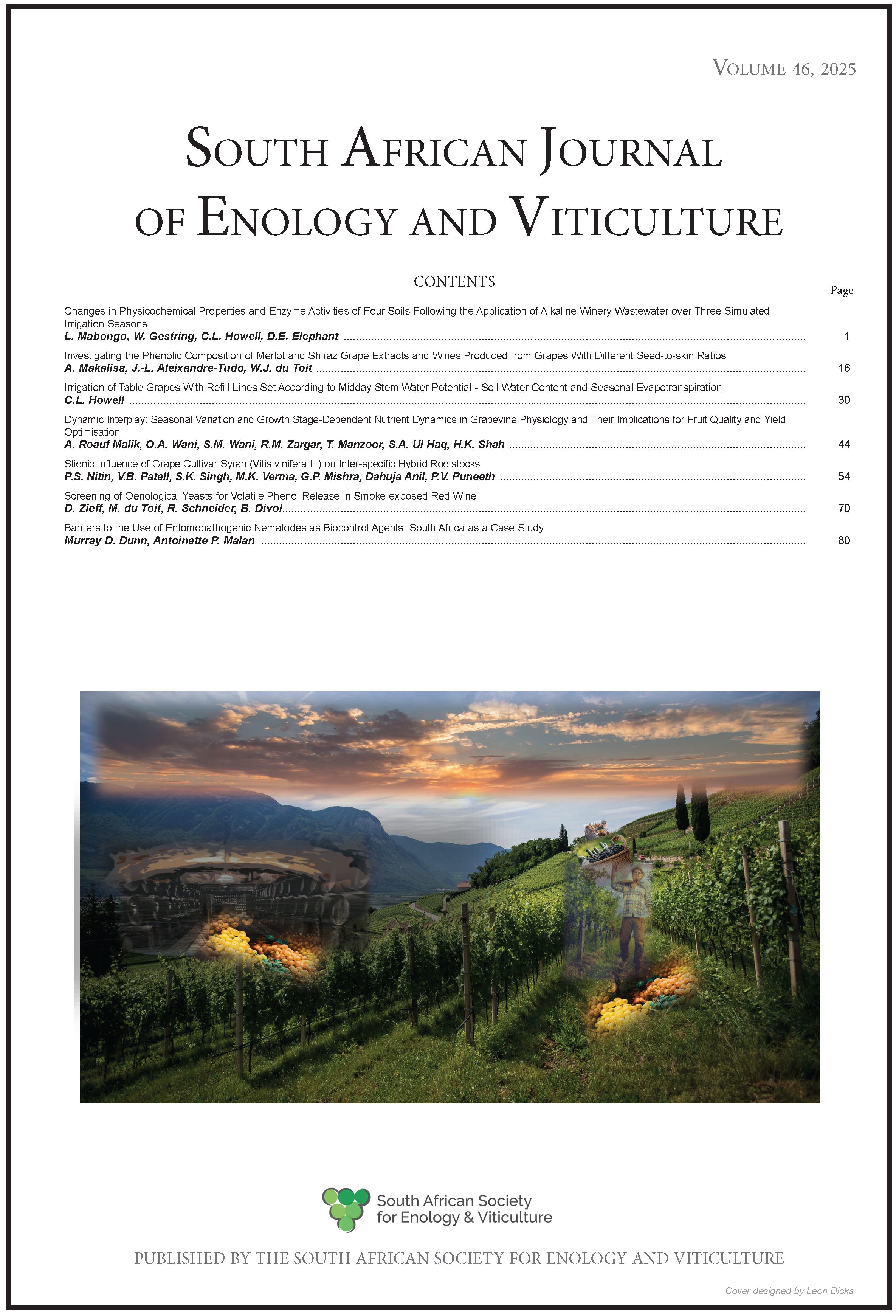Irrigation of Table Grapes With Refill Lines Set According to Midday Stem Water Potential - Soil Water Content and Seasonal Evapotranspiration
DOI:
https://doi.org/10.21548/46-6698Abstract
Irrigation water is a limited resource in most table grape regions. Furthermore, agriculture competes with urban and industrial needs for water. If climate change reduces rainfall, it could put water resources under even more pressure. Therefore, table grape growers must use their available water efficiently by implementing sound irrigation scheduling practices. In this regard, it is fairly simple to measure midday stem water potential (ΨS) and calibrate instruments used for irrigation scheduling against ΨS. The objective of the study was therefore to develop guidelines to use this approach for table grape irrigation. The study was carried out in five red and five white commercial table grape vineyards in the Berg River Valley region. For each cultivar there were two plots adjacent to each other. The soil in the experiment plot was allowed to dry out until ΨS reached -0.8 MPa. The other plot was irrigated with the rest of the block according to the growers’ schedules. Soil water status and midday ΨS were measured concurrently to determine the relationship between grapevine and soil water status for each cultivar. Once irrigation refill points were established, grapevines in the experiment plots were irrigated accordingly for three seasons. The results showed that midday ΨS in most of the selected table grape cultivars was well correlated with the soil water content in the root zone. By using this approach to table grape vineyard irrigation scheduling, substantially less irrigation water was applied where grapevines were irrigated according to midday ΨS compared to the grower’s irrigation schedules.
Downloads
Downloads
Published
Issue
Section
License
A copyright form will be e-mailed to the corresponding author when the manuscript has been accepted for publication.
In principle, the Author agrees to the following when he/she signes the copyright agreement:
I hereby assign to the SOUTH AFRICAN SOCIETY FOR ENOLOGY AND VITICULTURE (SASEV) the copyright of the text, tables, figures, supplementary material, illustrations and other information (the Material) submitted with the manuscript to be published in SOUTH AFRICAN JOURNAL OF ENOLOGY AND VITICULTURE (SAJEV) (the "Article"). The copyright becomes effective from the date the Article has been accepted for publication in SAJEV.
This is an open access journal, and the authors and journal should be properly acknowledged, when works are cited.
Author's may use the publishers version for teaching purposes, in books, theses, dissertations, conferences and conference papers.
A copy of the authors' publishers version may also be hosted on the following websites:
- Non-commercial personal webpage or blog.
- Institutional webpage.
- Authors Institutional Repository.
The following notice should accompany such a posting on the website: This is an electronic version of an article published in SAJEV, Volume XXX, number XXX, pages XXX - XXX, DOI. Authors should also supply a hyperlink to the original paper or indicate where the original paper (www.journals.ac.za/index.php/sajev/) may be found.
Authors publishers version, affiliated with the Stellenbosch University will be automatically deposited in the University's Institutional Repository SUNScholar.
Articles as a whole, may not be re-published with another journal.
The following license applies:
Attribution CC BY-NC-ND 4.0

